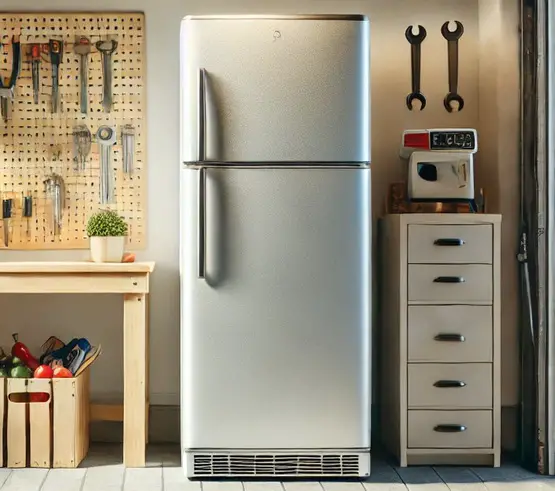I recently moved my old top-freezer refrigerator into the garage for extra storage after upgrading to a new fridge in the kitchen. Once the outdoor temperatures dropped, I noticed the freezer section in the garage unit stopped cooling properly. After some research, I discovered this is a common issue with top-freezer models in cold environments. Manufacturers often recommend a “garage kit” which is a small heater that tricks the thermostat into running more frequently. But is that really the best solution? Wouldn’t a separate temperature sensor in the freezer be a better design? I’m also hesitant about having the fridge run constantly or needing to unplug the heater when temperatures rise. Is installing the heater kit the most practical option, or are there better alternatives?

Here’s a closer look at why this issue occurs, how the heater kit works, and other potential solutions:
Why Top-Freezer Fridges Struggle in Cold Environments
When a standard, non-garage-ready top-freezer refrigerator is placed in an unheated garage, cold temperatures can confuse the thermostat. Since most models have a single thermostat located in the fresh-food compartment, the fridge may think it’s already cold enough and reduce how often the compressor runs. As a result, the freezer warms up and fails to maintain the correct temperature.
Heater Kits: How They Work and Their Drawbacks
Purpose: A garage kit warms the air around the fridge’s internal thermostat, tricking it into thinking the ambient temperature is higher than it actually is.
Effect: This causes the fridge to run more frequently, ensuring the freezer remains cold even when the garage temperature drops.
Drawbacks: While effective, this solution increases energy usage and may require you to unplug the heater during warmer months to avoid wasting electricity.
Why Don’t Manufacturers Include a Freezer-Specific Sensor?
Most top-freezer refrigerators are designed with a single thermostat and rely on cold air circulating from the evaporator to the freezer and fridge compartments. Adding a separate freezer sensor would increase production costs and design complexity. Manufacturers aim to keep costs low and design their appliances for use in controlled indoor environments, typically with temperatures above 50°F (10°C).
Alternative Solutions to Consider
- Garage-Ready Refrigerators:
Some models are specifically designed to handle extreme temperature ranges. If you plan to keep a fridge in your garage long-term, investing in a garage-ready unit can save you from these issues entirely. - Insulating or Heating the Garage:
By partially insulating or heating the garage, you can prevent extreme temperature drops, reducing the need for modifications to the fridge. This solution also provides additional benefits, such as protecting other items stored in the garage. - Thermostat Override Devices:
External devices can control the power cycle of your fridge based on temperature settings. These can be more complex to install but offer greater customization. - DIY Modifications:
In theory, you could add a second sensor to the freezer, but this requires electrical knowledge, voids warranties, and may pose safety risks.
What’s the Best Solution for You?
- Quick Fix: A heater kit is the simplest and most affordable option, especially if you need an immediate solution. It’s easy to install and effectively resolves the issue.
- Energy Efficiency: If energy costs are a concern, look for advanced heater kits that only activate when the thermostat senses a drop in temperature.
- Long-Term Investment: For a permanent setup, upgrading to a garage-ready refrigerator or insulating the garage might be the better choice.
The heater kit is a practical, widely accepted solution to ensure your freezer performs well in cold weather. While it may not be the most elegant or energy-efficient option, it addresses the problem effectively without significant modifications. If managing the heater kit becomes inconvenient or costly, consider upgrading to a garage-ready model or improving your garage environment for a more permanent fix.



Leave a Reply